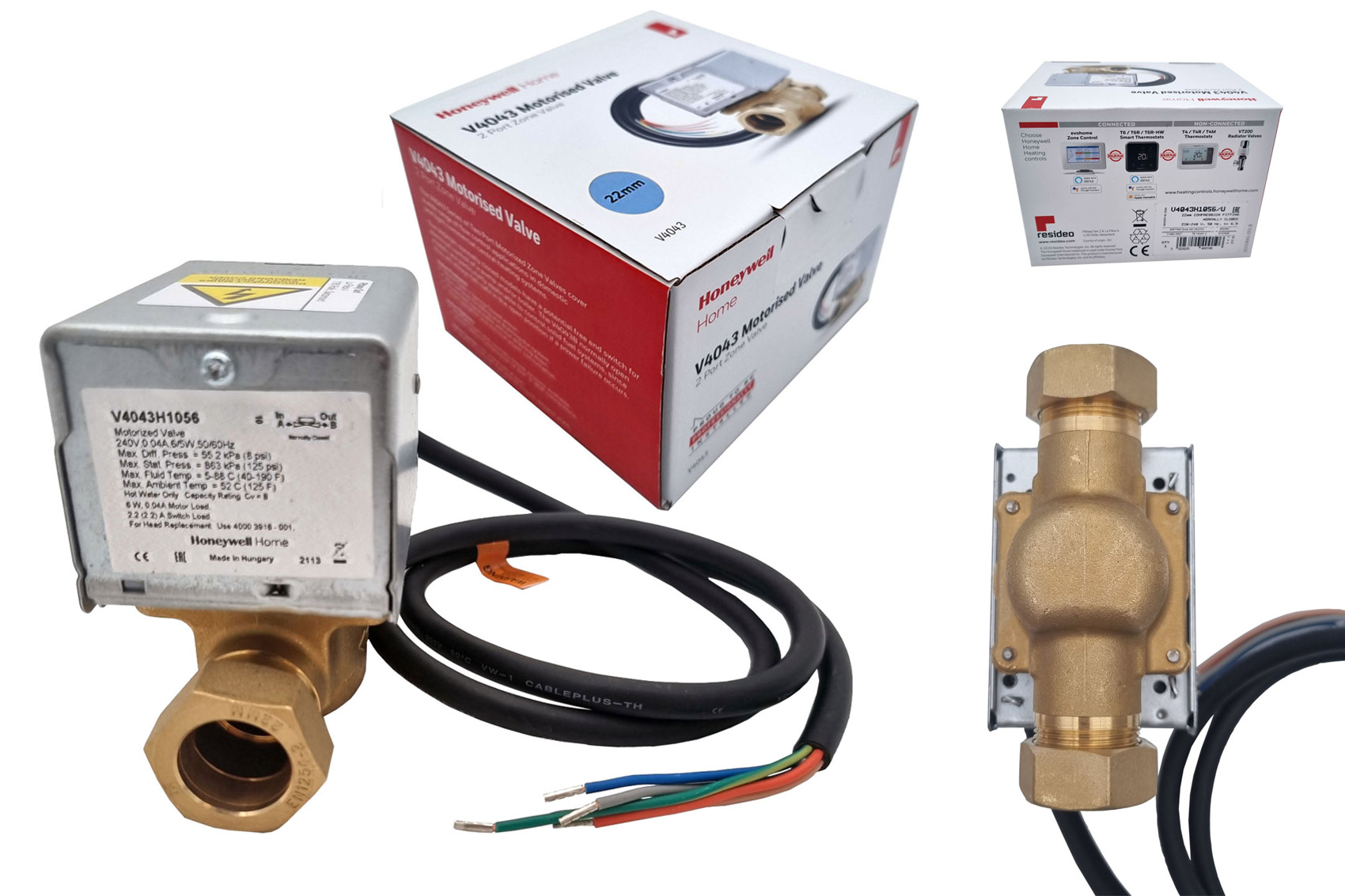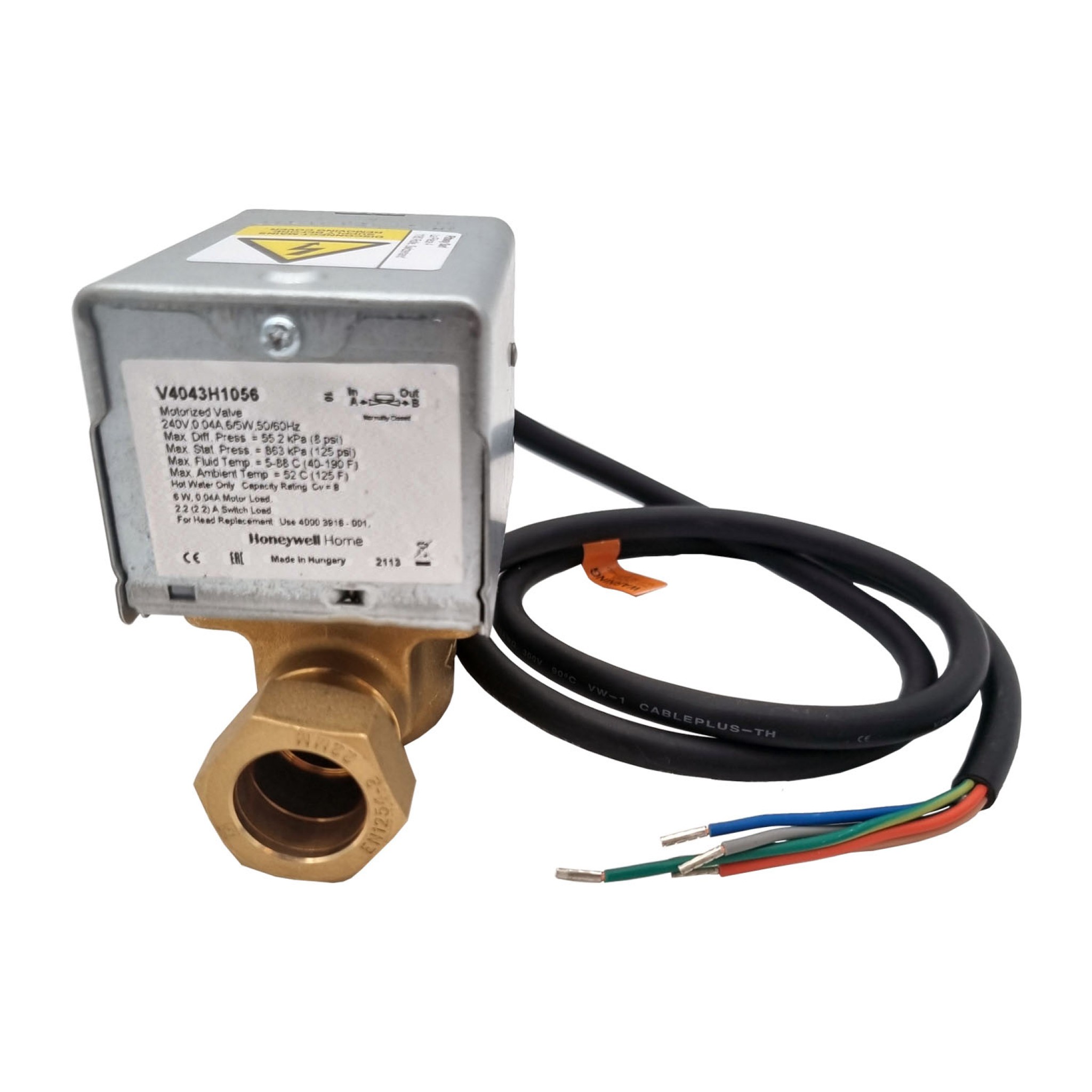

What Is a Motorised Zone Valve?
A Motorised Zone Valve is a type of valve used in HVAC (Heating, Ventilation and Air Conditioning) systems which regulates the flow of water or steam in different zones of a building. The valve is typically installed in the piping system and is controlled by an electric motor.
The valve has a movable disk or ball that can be rotated to control the flow of water or steam. The electric motor is connected to the valve and can be controlled by a thermostat or other temperature control system to open or close the valve as needed to maintain the desired temperature in each zone.
Motorised zone valves are commonly used in residential homes with separate heating areas for different floors, or commercial buildings with different HVAC zones for different departments or floors. They are also used in radiant heating systems (where heat is supplied directly to the floor or panels in the wall or ceiling of a building).
Please find below several frequently asked questions regarding motorised zone valves:

Are Zone Valves Interchangeable?
Whether motorised zone valves are interchangeable depends on a few factors, including the manufacturer, the type of valve, and the specific model.
Some manufacturers offer interchangeable parts for their zone valves, which allows for greater flexibility in installation and repair. In these cases, you may be able to replace a faulty zone valve with a compatible model from the same manufacturer without having to make any significant modifications to your HVAC system.
However, it’s important to note that not all motorised zone valves are interchangeable. Different manufacturers use different valve designs and specifications, so you’ll need to check the compatibility of any replacement valve before making a purchase. It’s also important to ensure that the replacement valve is the same size and type as the original valve, and that it’s compatible with your HVAC system’s voltage and control systems.
If you’re not sure whether a motorised zone valve is interchangeable with your existing valve, it’s best to consult with a qualified HVAC technician. They can help you select the right replacement valve and ensure that it’s installed properly for optimal performance and safety.
Why Is My Motorised Zone Valve Buzzing?
There are several possible reasons why your motorised zone valve is buzzing:
- Electrical issues: One of the most common reasons for a buzzing motorised zone valve is an electrical issue. This could be caused by a loose wire, a faulty transformer, or a faulty control board. If the electrical components of the valve are not functioning properly, it can cause the motor to vibrate and create a buzzing sound.
- Dirt or debris: Over time, dirt and debris can accumulate in the valve, causing it to become clogged. This can interfere with the movement of the valve and cause it to vibrate or buzz.
- Mechanical issues: If the valve is old or has been subjected to heavy use, it may develop mechanical problems that can cause it to buzz. This could be caused by worn or damaged gears, a faulty motor, or other mechanical issues.
- Low voltage: If the valve is not receiving enough voltage, it may not operate properly and may emit a buzzing sound. This can be caused by a faulty transformer or other electrical issues.
If your motorised zone valve is buzzing, it’s important to have it inspected by a qualified HVAC technician. They can diagnose the problem and make the necessary repairs to ensure that your valve is functioning properly.
How To Fit a Motorised Zone Valve?
Fitting a motorised zone valve requires some knowledge of plumbing and electrical systems, so if you’re not comfortable with these tasks, it’s best to hire a qualified HVAC technician to do the job. Here are the general steps involved in fitting a motorised zone valve:
- Turn off the power supply to the HVAC system to prevent electrical shock.
- Identify the location in the piping system where the valve will be installed. This should be in the return line of the zone being controlled, downstream of the heating device and upstream of any check valve.
- Shut off the water supply to the zone and drain the water from the pipes.
- Cut into the pipe at the chosen location and install the valve according to the manufacturer’s instructions. Be sure to install the valve with the correct flow direction.
- Connect the wiring to the valve according to the manufacturer’s instructions. Typically, the wiring will involve connecting the valve to a transformer and control panel.
- Test the valve to ensure that it is functioning properly. Turn on the power supply and test the valve by operating the control system.
- Once you have confirmed that the valve is functioning correctly, turn the water supply back on and check for leaks.
Keep in mind that the specific steps involved in fitting a motorised zone valve can vary depending on the manufacturer and model of the valve, as well as the design of your HVAC system. Be sure to consult the manufacturer’s instructions and follow all recommended safety procedures when installing the valve. If you’re not confident in your ability to install the valve properly, it’s best to seek the assistance of a qualified HVAC technician.


 FREE Delivery on all orders over £50
FREE Delivery on all orders over £50 


